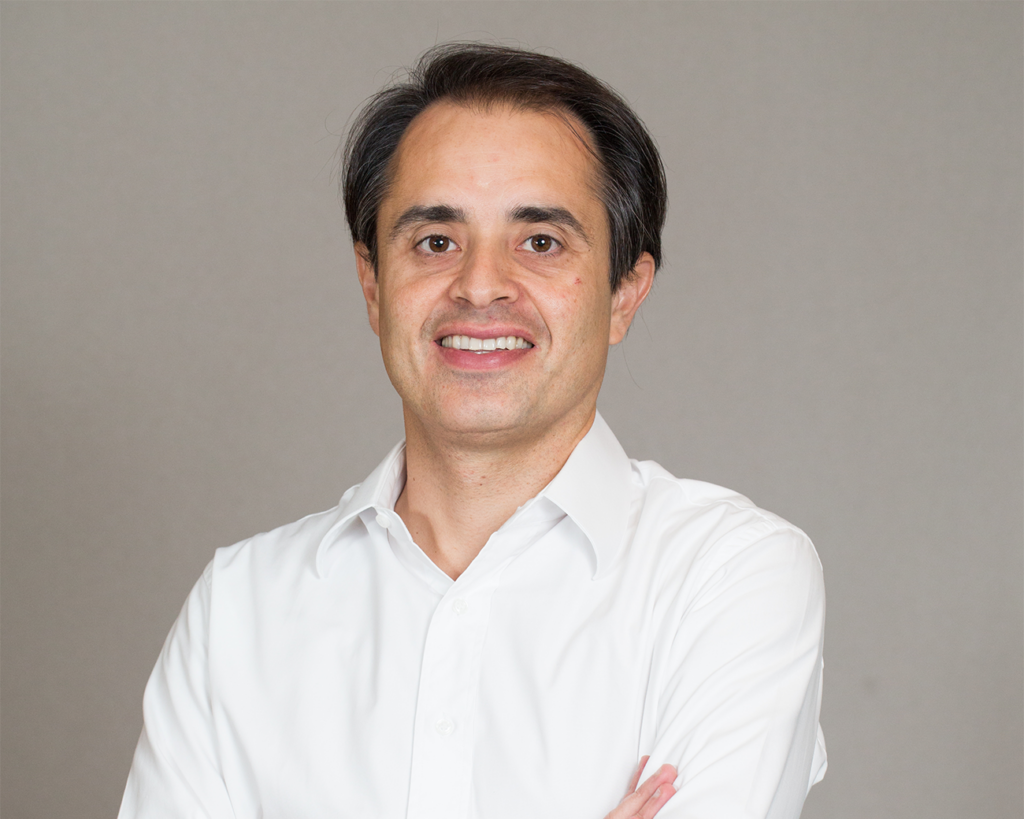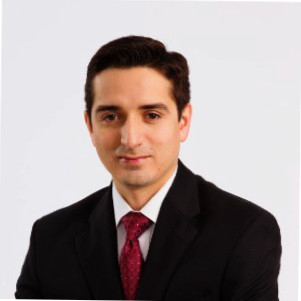Member Profiles
Miguel Gutiérrez, Partner, The Rohatyn Group
18 March 2015

LAVCA heard from The Rohatyn Group Partner Miguel Gutiérrez about opportunities in volatile and/or distressed markets and their approach to private credit in Latin America.
LAVCA:Please provide some background on TRG. What about TRG’s strategy is different/unique?
Gutiérrez: Founded by Nicolas Rohatyn in 2002, The Rohatyn Group (“TRG”) is an investment management firm focused exclusively on emerging markets. TRG, along with its subsidiaries and affiliates, currently manages approximately $5.5 billion in total assets. Approximately $5 billion of the firm’s AUM is invested in private market investments including private equity, private credit, real estate and infrastructure. Additionally, almost $1 billion is invested in liquid market strategies including hedge funds and local currency debt. Headquartered in New York, TRG has a presence in 15 cities worldwide including Singapore, Hong Kong, London, Buenos Aires, Lima, Montevideo, Mexico City, São Paulo, Mumbai and New Delhi. Given our exposure to both private and public markets, we believe that we have some useful synergies and insights at the time of executing transactions in our different regions and throughout the different asset classes that we manage.
LAVCA: How have you seen the universe of LPs seeking exposure to emerging markets evolve? What types of LPs are seek exposure to LatAm?
Gutiérrez: Like in other EM regions around the world, LPs in Latam have expanded beyond DFIs and local pension plans supporting the growth of private markets in the region. The LP base has diversified to include corporate pension plans, fund of funds, endowments and some Sovereign Wealth Funds from markets such as the US, Europe and, most recently, Asia.
What is interesting for us is that while these LPs used to allocate mostly to growth PE in the region and some early real estate, they are now also looking at other asset classes such as private credit and infrastructure and more targeted co-investments.
LAVCA: What strategies/sectors are of most interest in Latin America right now? Please share some examples of how you have executed specific strategies including real assets, credit, and equity.
Gutiérrez: The region as a whole is evolving as a source of different investment opportunities and propositions. We are finding different ways of accessing a rich pipeline through different approaches, structures or securities. The secular private markets opportunity has been the core of TRG’s investment activity for the past seven years or so. As we continue to pursue this trend, we keep exploring a number of exciting prospects either in pure PE, specific co-investments in sectors and countries of expertise, illiquid credit, infrastructure (including clean energy) and in some cases through strategic partnership with other local managers.
Each of these strategies have its own merits and rationale but if we pick for example our approach to private credit in the region; Latin America has among the lowest credit-to-GDP ratios globally. Bank lending to the middle market segment, defined as companies with EBITDA in the range of $10mm to $30mm, is particularly inadequate. Local banks in Latin America have been relatively inefficient in their coverage of middle market companies, dedicating most of their attention to the blue chips, multinationals, and asset heavy companies. Lending underwriting standards for middle market companies are usually bureaucratic and rigid providing an opening for non-traditional lenders, such as ourselves, to fill the gap.
Looking out over the next three years, as global rates rise, we also expect to see some distressed opportunities. Although that is a different analysis from a pure private credit, the benefit of TRG is that we can be ready to execute on distressed as well given our diversified skill sets.
LAVCA: What are common investment horizons (cycles and holdings) for these strategies?
Gutiérrez: On the PE side, we are rethinking the traditional long holding periods with a shorter investment horizon plus 3-4 years of holdings (this will obviously depend on the specific situation and the opportunity set). Infrastructure by definition is a longer play. In terms of direct lending, loans are generally held to maturity and will typically have investment horizons of three to five years. On specific co-investments, sometimes we have the benefit of longer holding periods given that investors may be more strategic in nature.
LAVCA: What LatAm countries are most appealing for TRG’s investment strategy? How do you see this evolving in the next 3-5 years?
Gutiérrez: At TRG we tend to explore Latam investment opportunities from multiple angles and, in general, through a broader range of markets. We understand that while in some countries we should be sourcing and executing your typical growth PE play, in others we may prefer distressed/value oriented investments or credit opportunities given the restricted access to financing in some of these markets.
Our sourcing efforts span the region with most of our resources focused on a combination of the most “traditional” markets, i.e. Mexico, Brazil, Colombia, Chile and Peru but we also look for opportunities in markets like Uruguay, Central America, Argentina, etc.
LAVCA: Are there any synergies between the opportunities in Latin America and the opportunities in other emerging markets?
Gutiérrez: TRG believes that successful investment performance in emerging markets results from striking a balance between understanding global factors such as industry trends, economic cycles and liquidity flows, on the one hand, and the in-depth knowledge of local markets on the other hand. Synergies are present at many stages of the investment process.
First, having an active presence in emerging markets globally provides an important perspective on relative valuations, as well as sector dynamics, across markets and regions.
Second, despite the many factors that are specific to investing in an individual country or region, many of the opportunities and challenges faced by mid-market companies in Latin America are common not only across emerging markets, but also across companies globally. A perfect example is the desire to expand into neighboring countries or even markets further afield. Our ability to transfer this knowledge across our portfolio companies globally makes us attractive partners for these companies and provides an important lever through which to add value.
Finally, access to corporate networks in other emerging markets can provide less obvious sources of exits, such as the 2011 sale of our stake in Infarmasa, a Peruvian manufacturer of generic pharmaceuticals, to Israel’s Teva Pharmaceuticals.
It is also true that in this current environment we are seeing a phenomenon of “De-Globalization” where certain events are happening for very specific reasons and circumstances in these markets. Current economic dynamics in countries like Argentina, Russia, Ukraine and Turkey have less to do with global phenomenon (i.e., oil prices, interest rates in the US or European measures) and more with intrinsic factors.
LAVCA: Given your experience with volatile and/or distressed markets how do you go about finding the right investments?
Gutiérrez: In volatile countries our selection/screening process is much stricter than in more stable countries. We can point to three key elements from our investment strategy when investing in distressed countries.
First, we prefer to focus on sectors where the country or company has a clear competitive advantage that is sustainable in the mid/long term. We also like to focus on sectors which conduct a meaningful portion of their business in US dollars, in order to minimize the risk of a local currency devaluation. This is not exclusively exporters and includes domestic businesses such as certain agribusinesses. The consumer sector can also be attractive as you find a middle class with capacity to spend but with restricted opportunities to do so.
Second, we seek a significant valuation cushion on entry to weather the inherent volatility of these markets, the weak macro situation, and sometimes a regulatory environment that presents significant headwinds. A variety of situations open the door to securing such a cushion. For example, a company with a weak capital structure (either too much leverage or very concentrated in the short term) might need to update manufacturing processes or to significantly increase production to capture new markets or increase market share. Often you also find weak management that must be replaced with a new team of professional talent. As another example, volatile markets often offer the opportunity to buy good quality assets from distressed or motivated sellers. You might find multinational companies with good assets and good businesses that cannot operate in the country. They may either look for a local partner to help them to operate the asset or exit entirely but leave significant support such as the use of the technology or strong trademarks. This is the most desirable deal, and such deals are not easy to find. We believe that TRG’s blend of local presence and global view enables us to get access to the most numbers of opportunities.
Finally, these markets have cycles and investing at the right time in the cycle as well as carefully timing the exit is also a key part of our process. The window of opportunity for exiting an investment may be very narrow. Having multiple exit strategies is always a requirement, but in distressed markets is one of our main deal killers. We focus on companies that would be a great target for strategic buyers.
LAVCA: What are the risks of investing in volatile and/or distressed markets and what does the risk/return opportunity look like?
Gutiérrez: The primary risks are macroeconomic and political. That includes government intervention, FX risk, macro volatility. The TRG public markets team, which specializes in local currencies and interest rates, helps us to understand macro risks that are crucial to assessing the risks inherent in investing in such volatile markets. To mitigate these risks we carefully evaluate the exposure that the company might have to the government, not only directly but also indirectly, for example through trade policies, regulatory frameworks or strategic interest in a sector. We would typically stay away from deals where there is a high component of political risk, especially when the tail risk events could be quite drastic, such as losing a concession or license, being out of the market if the imports are opened or dependency on a government owned off-taker. To compensate for these risks we are generally looking for returns north of 35%.
Balancing out these risks, however, we see less competition in distressed markets. Multinationals are generally not investing, global PE funds and fund of funds are for the most part more conservative and prefer to wait for the situation to improve before committing capital. We end up competing with a reduced number of country focused funds/investors and the local families/companies which we like, because we have the opportunity to partner with the correct local partner. Having a local presence in Argentina gives us an edge that we are looking to exploit in the coming months.
LAVCA: Are the types of LPs that are interested in distressed opportunities different than traditional private equity investors? Who are they?
Gutiérrez: LPs interested in distressed or value oriented propositions are obviously the ones accepting higher risk in hopes of achieving a higher return. In general, they have a shorter time horizon and are opportunistic in nature. They usually seek IRRs in the range of 30% while multiple on cash is somewhat less relevant given the potential short duration of the investment. These LPs usually have a dedicated pool of capital to allocate to these opportunities which is either classified as special situations or event driven investing. While these allocations were more common in markets like the US and Europe, we have seen them now including some EMs, Latin America being one of them.
LAVCA: What are the dynamics of exit opportunities in various sectors?
Gutiérrez: Exit dynamics vary around the region. Countries with well-established local markets, pension fund regimes, and significant institutional local market investors offer a wider range of exit options. However in sensitive industries like energy in general, and oil & gas, one of the key forces remains the strategic players who are attracted to stable, performing assets where development risks are mitigated.
On the credit side we also experience the same dynamics, especially in the mid market where we focus. Capital markets players and banks often refuse to extend credit when the company and sponsor are building up their business and require term loans to build capacity or prepare to capture new markets. In general, there is higher risk and uncertainty around the future plans. However when these companies show that they have performed in accordance with stated objectives, it becomes much easier to find a bank to refinance or eventually to tap the capital markets via bond issuance or other mechanisms.
This analysis is a key part of exploring and selecting in which part of the risk curve to position yourself. Willingness to run that risk with good businesses and committed sponsors can create an interesting payoff.
LAVCA: Why did you join LAVCA?
Gutiérrez: Relationships are so crucial to successful investing. LAVCA offers TRG an important venue through which to cultivate relationships with both our peers and LPs, exchanging views and insights on the region and private markets investing more broadly.
You may be interested in...
-

Luciana Antonini Ribeiro, eB Capital
Executive: Luciana Antonini Ribeiro, Co-Founder and CIO Member Name: eB Capital Year...
-

Cristiano Gioia Lauretti, Kinea Private Equity
Member: Kinea Executive: Cristiano Gioia Lauretti, Head of Private Equity HQ: São...
-

Maria Pia Iannariello, MGM Innova Capital
LAVCA recently spoke with Maria Pia Iannariello, Co-Founder & COO of MGM Innova Capital,...
-

Rafael Ramirez, Portfolio Manager, Alaska Permanent Fund Corporation
LAVCA recently spoke with Rafael Ramirez, Portfolio Manager– Private Equity &...
